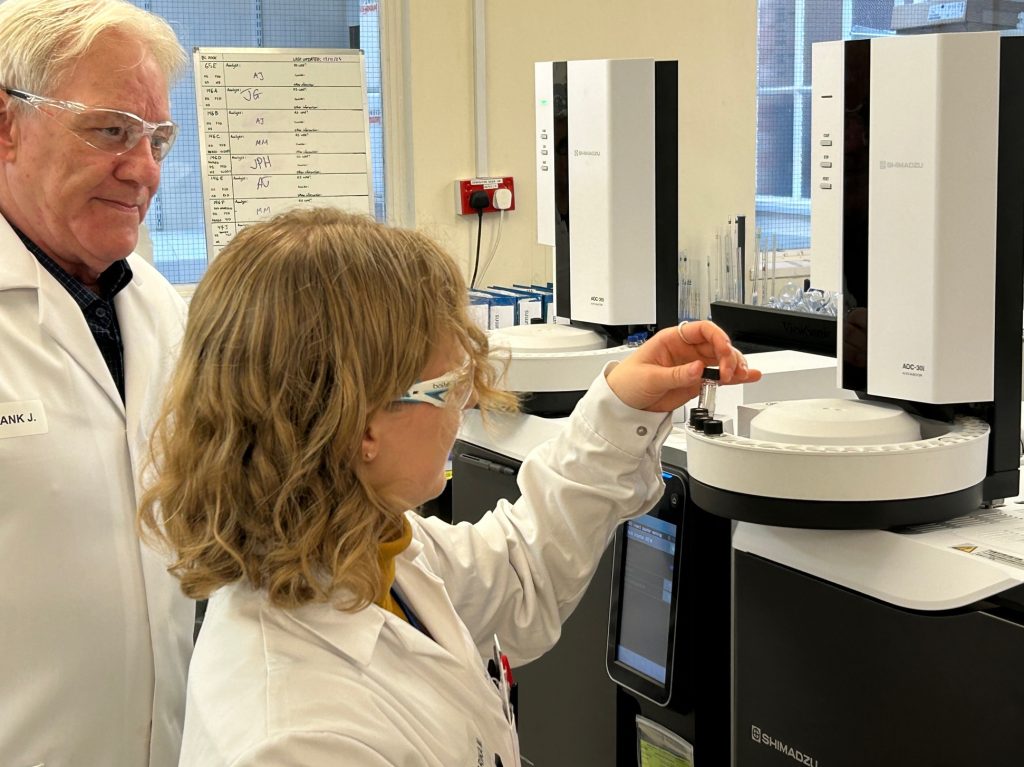For over 40 years, Butterworth Laboratories has provided independent, contract analytical services to the global pharmaceutical and related industries.
Fundamentals of GC Method Development
16 November 2023
It was 1991 and I had arrived at Berridge Environmental Laboratories in Chelmsford, hot off the train from Edinburgh where I had just completed a 5-year joint honours degree. As shared in previous Blogs, I was being mentored by Dennis, a semi-retired elderly gentleman with a shock of white hair and asbestos fingers from all his years of handling hot GC components. I quickly learned that Dennis always passed on his knowledge of the art with a memorable question, statement or catchphrase which aided learning.
As shared in my last “Dennis” blog, he had explained it was the greater affinity of the retained components with the column stationary phase at a given oven temperature, that gave rise to the chromatographic separation, and that the difference in elution time of components was the greater time that the later eluting component was resident in the stationary phase. He concluded that the real skill in method development was the choice of a column with the appropriate stationary phase.
On this occasion, he started by asking what was the first question to be asked at the start of method development. Brilliant, I knew the answer this time and said the choice of column of course! He smiled and told me it doesn’t matter what column you have in the oven if the analytes don’t make it out of the injector so the question was “Would the sample components fly or fry”. He went on to say that this assessment was to consider if the sample components were sufficiently volatile and would fly from the hot injector onto the column, or if they would fry and simply contaminate the liner, in which case HPLC would be required. What’s next he asked? This time it had to be the column I said. His smile widened and he told me to slow down just a little and suggested that we decide what detector would be used since we needed to be able to see the results of the chromatographic process.
Finally, I got the next bit right when I told him that now we should make the vital column selection. At this point, Dennis reminded me that “like dissolves like” and that a non-polar phase was best for non-polar analytes, and a polar phase for polar analytes. He then told me that his favourite column, especially for samples composed of components with varying polarities, was the mid-polarity DB624 type phase (6% cyanopropyl, 94% polydimethylsiloxane).
Now we had decided what would be an appropriate stationary phase we went on to discuss what Dennis always called the ‘Achilles heal’ of GC, the injector. He explained the need to focus sample components in as narrow a band as possible at the start of the column since this was more likely to give sharp peaks with increased sensitivity at the detector and this would also be aided by a low oven starting temperature. He went on to say that the narrower, hence the lower volume of the injector liner, the faster the vapourised sample components would be swept onto the column in a narrow band. We discussed the problem, especially with water as an analytical solvent, that flash vaporisation could overload the volume of the liner and could result in back-flushing and contamination of the carrier gas line. Dennis then pointed out the use of a high split on these occasions in both combatting back flush and ensuring a narrow injection band. A high flow through the injector was the aim. Dennis then added the aid memoir “small bore large split, large bore small split”. This was a reminder that when using a narrow bore column with say 0.8mL/min carrier flow, a large split would be required to maintain sufficient flow through the liner while, a mega bore column with say 8mL/min carrier flow would allow a lower split, while still allowing adequate flow through the liner.
This ‘Dennis lesson’ in GC method development took no more than 15 minutes and included some of his usual memory aid sayings and gave me a sense of ease that GC method development was not beyond my understanding.